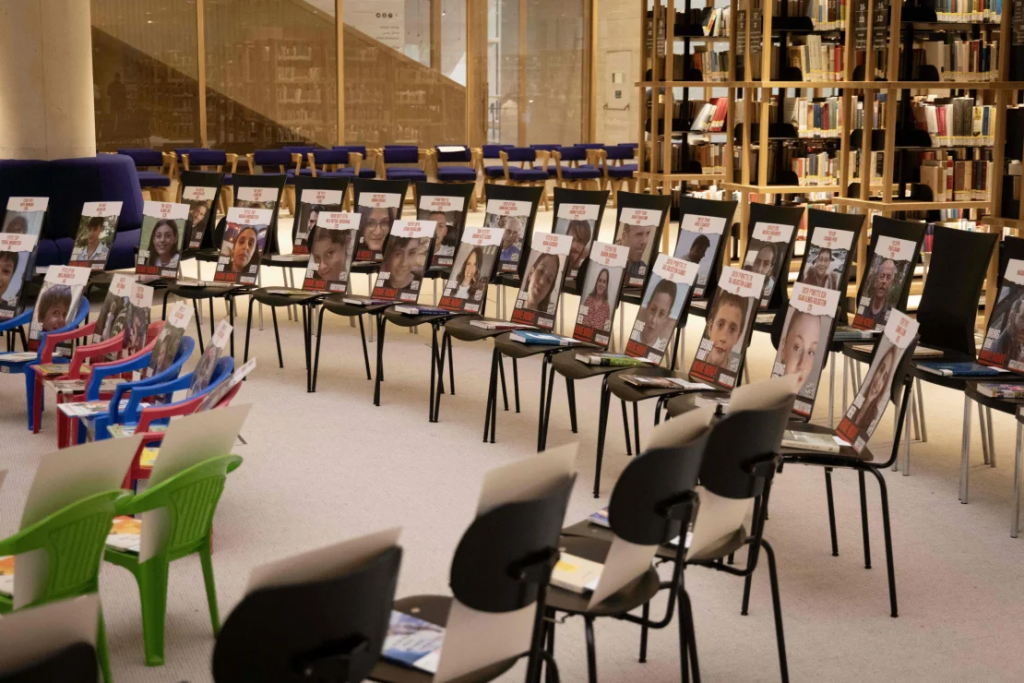
Israel and Hamas reached an agreement early Wednesday for a pause in fighting, alongside the release of some of the hostages held by the militant group, in return for Palestinian prisoners jailed by Israel.
The breakthrough deal comes after weeks of painstaking discussions involving international negotiators and mediators – and marks the first major de-escalation in the conflict, which began on October 7 after Hamas’ brutal attacks on Israel killed around 1,200 people.
Since then, more than 12,000 people have been killed in Gaza since Israel began airstrikes on the enclave, according to Palestinian authorities.
Here’s what we know so far.
What’s in the deal?
The deal will see the release of 50 women and children held captive in Gaza by Hamas, according to Qatar, which mediated negotiations between Israel and the militant group.
In return, Israel will grant a “humanitarian pause” in its assault of the enclave and release some Palestinian prisoners.
Hamas released a statement saying 150 women and children held in Israeli prisons would be freed. The deal also allows hundreds of trucks carrying aid relief, medical supplies and fuel to enter Gaza, it said, echoing details in Qatar’s statement.
Israel’s own statement said the pause in fighting would last four days – but said the truce could potentially be longer, with an extra day added for each 10 additional hostages available for release.
The truce is slated to begin at 10 a.m. local time (3 a.m. ET) on Thursday, an Israeli official told CNN Wednesday.
There is an option for the pause to last as long as 10 days, but Israeli officials believe it is unlikely to last that long.
Which hostages are being freed?
The names of the hostages to be released haven’t been publicized. However, Israeli military spokesperson Lt. Col. Jonathan Conricus said they are all Israelis, with some dual nationals.
US President Joe Biden said on Tuesday that the deal “should bring home additional American hostages.”
Two American hostages, Judith Tai Raanan and her 17-year-old daughter, Natalie Raanan, were among four hostages released earlier in the conflict.
Hamas is believed to be holding 239 hostages in Gaza, according to the Israeli military. More details of the release deal will be sent to families later today, said the Israeli government.
Some 150 Palestinian prisoners will also be freed from Israeli prisons, Hamas has said. The vast majority of the Palestinian prisoners listed as eligible for release are male teenagers aged 16 to 18 – children under the United Nations definition – although a handful are as young as 14. Some 33 are women, according to a CNN count.
The list of 300 names published by Israel also lists the charges under which the prisoners are being held. Throwing stones and “harming regional security” are among the most common, but others include support for illegal terror organizations, illegal weapons charges, incitement, and at least two accusations of attempted murder.
How did the agreement come together?
The deal follows weeks of negotiations that involved the US and Egypt, with several starts and stops as fighting on the ground raged on, including Israel’s raid on the largest hospital in Gaza, sources told CNN.
The deal hinged upon approval from Israel’s cabinet – which voted in favor of the agreement by a “significant majority” in the early hours of Wednesday morning, after what an Israeli official called a “tense and emotional” six-hour meeting.
The deal also followed mounting pressure on the Israeli government from the families of the hostages, who have demanded answers and action from Israeli Prime Minister Benjamin Netanyahu.

What happens next in the war?
Several parties and hostage families expressed their hopes that this initial deal could pave the way for the return of all hostages, with Israel’s president calling it a “significant first step.”
Qatar’s lead negotiator has also urged the international community to “seize this brief window of opportunity to generate further momentum for the diplomatic track,” saying such a move was the only way to resolve the conflict and establish lasting peace.
However, Israel made clear in its statement it plans to resume its air and ground campaign on Gaza “to complete the eradication of Hamas” once this round of hostage releases concludes.
Netanyahu has repeatedly said there are two goals to the war: the return of all hostages, and the destruction of Hamas.
On Tuesday before the deal was approved, Netanyahu told his cabinet the agreement would “allow (the military) to prepare for the continuation of the fighting.” He said the war would continue until “Hamas, Gaza will no longer be a threat to Israel.”
As reported by CNN
